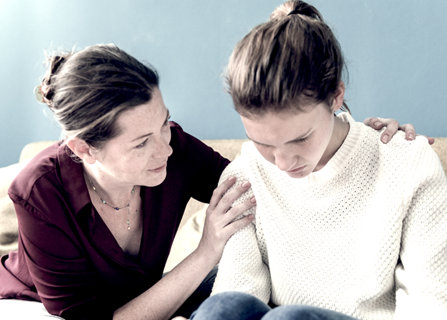Tools for Preventing Drug Use in One’s Community

The subject of drug and alcohol abuse is one that we don’t like to talk about much, probably because it always feels like the “Unsolvable Problem” of human nature. Case in point, there is the general datum that just about everyone knows that they shouldn’t use drugs and misuse alcohol, yet millions of Americans still do so. Why is this? It doesn’t make sense. It defies logic. It makes us not want to confront or think about the problem.
But we have to confront it. And we have to think about it. We have to because our country edges further and further into epidemic-levels of addiction and dependence on drugs and alcohol. Getting out of the trap that is modern-day, addicted America will take significant effort in every community across the nation.
What Are We Missing?
In all of the effort and attention that is placed on preventing drug use and alcoholism, little attention is ever placed on the extenuating circumstances that often lie as key incentive factors in whether or not one grows up to be a drug user. This is why, when we attempt to curb and even prevent drug use statistics in a community, we have to look at far more than just the specific drug use and drug crime issues that occur in that community.
In an excerpt from the Substance Abuse and Mental Health Services Administration:
“Preventing mental and/or substance use disorders and related problems in children, adolescents, and young adults is critical to Americans’ behavioral and physical health. Behaviors and symptoms that signal the development of a behavioral disorder often manifest two to four years before a disorder is present. In addition, people with a mental health issue are more likely to use alcohol or drugs than those not affected by a mental illness.”
The SAMHSA report goes on to say that:
“If communities and families can intervene early, behavioral health disorders might be prevented, or symptoms can be mitigated.”
“Results from the 2014 NSDUH report showed that of those adults with any mental illness, 18.2% had a substance use disorder, while those adults with no mental illness only had a 6.3% rate of substance use disorder in the past year. If communities and families can intervene early, behavioral health disorders might be prevented, or symptoms can be mitigated.”

We can say what we want to say and argue till the cows come home on what is or is not “mental illness” “mental health” “disorder” etc. Those terms are very controversial, being that the sphere of mental health is one so heavily argued about and debated to this day. However, we can all agree that when a young person is struggling with strife, behavioral difficulties, a poor home life, bad parenting, a hard time in school, depression, anxiety, and any of the other problems that are all too common in one’s youth, all of these factors can act as major predispositions to using drugs and misusing alcohol.
Preventing drug use in one’s community then becomes a matter of doing far more than just addressing the current drug problem in that community. It becomes a matter of addressing all of the factors that influence the quality of living in that community, especially as pertains to how those factors affect the youth of that community.
Prevention Programs Must be Comprehensive
Everyone wants to know the key to preventing drug use in one’s community, the miracle solution, the way out of a drug and alcohol trap, etc. People want peace of mind and comfort. They want to feel like they are never going to have to worry about drug problems entering into their communities and homes ever again.
But there is no cure-all, no one-size-fits-all solution for safe-pointing every community from drug and alcohol risk. In a study from the “Prevent Med Abuse” group, which is registered as a “Community Anti-Drug Coalitions of America (CADCA) Initiative” group, the study listed the realistic expectations for preventing drug abuse on a community level. The group indicated key points that we have to keep in mind when engaging in drug use prevention:
“There is no one silver bullet or single strategy to prevent teen Rx drug use. No single policy change will magically stop the misuse of these medications. No one curriculum or program can eliminate Rx drug abuse in your community. It takes many coordinated strategies to change specific behaviors.” (Source)
The group spoke in detail on how efforts to prevent drug abuse in a community must be comprehensive and multi-faceted:
“Coalitions and communities can be more successful in achieving community-level change related to preventing prescription drug abuse when their strategies are part of a comprehensive plan that targets individual youth and adults and also impacts the shared community environment in which we live. Our goals are to create strategies that empower youth to make healthy decisions, as well as create family, school and community environments that promote and support healthy decision making by youth. Translating these goals into on-the-ground strategies means to create interventions that impact the availability of prescription drugs, change community norms around prescription drug misuse and addiction, and which reinforce the importance of policies and practices that can prevent Rx drug abuse.”
Key Strategies for Reducing Drug Use and Alcohol Misuse in Your Community

There are several ways in which a community can work on preventing drug abuse within its homes, schools, churches, job places, and within the community as a whole. The important thing to remember is to put effort into all areas below, not just pick one or two and go with those:
- Provide Education on Drug and Alcohol Abuse. People, especially young people, need to know more about the risks attendant with drug use and alcohol misuse. We need every parent teaching their kids about the dangers of messing around with drugs and alcohol, and we need schools teaching this information too.
- Increase Access to Addiction Treatment. While millions of Americans struggle with drug and alcohol addiction, few ever get the chance to receive the proper treatment for their drug problem. Individual communities need to work on making quality addiction treatment available for all who need it.
- Enhance Skills on Recognizing and Reducing Incidents of Drug Use. Law enforcement officers and EMTs know a drug user when they see one because they know of the signs to look for. Individual community members need to know the signs as well. Communities need to “skill-up” and not be so ignorant about drug use occurring before their very eyes. Parents as well as educators should be educated on the signs of drug abuse and spot these indicators sooner rather than later, so that we can treat the person before they become an addict.
- Shift Punishment and Consequences of Drug Use. Drug users and alcoholics are often afraid to come forward and seek help for their addictions because they feel as though they will simply be sent off to jail somewhere and forgotten about. We need to shift our judicial approach to drug addicts and alcoholics, and we need to approach addiction from a treatment first perspective.
If every community in the States put in real effort on the above four areas, that community would notice a rapid decrease in drug use trends, alcohol misuse, interest in drugs, drug crime, accidents and injuries caused by drugs and alcohol, etc. We have to remember to retain a comprehensive approach, and we have to all work on this together. It’s quite the commitment, quite the effort, but the end goal of sober and drug-free communities is well worth it.
Sources:
- https://www.samhsa.gov/prevention
- http://www.preventmedabuse.org/about-the-tool-kit/7-strategies-to-effective-community-change/#.W6fDEWRKjow


 ®
®